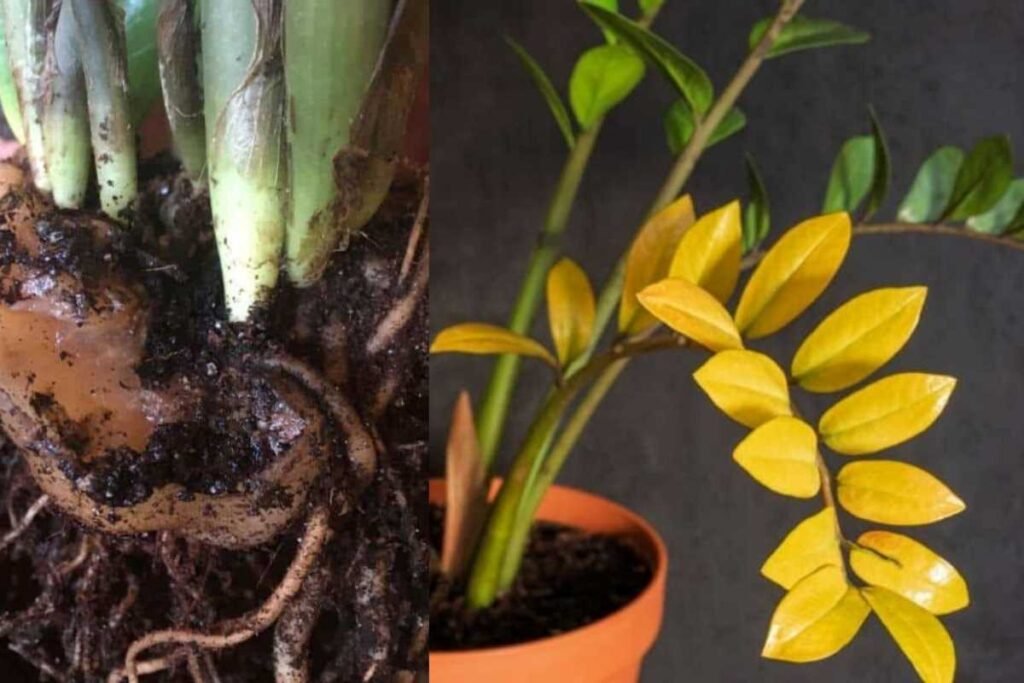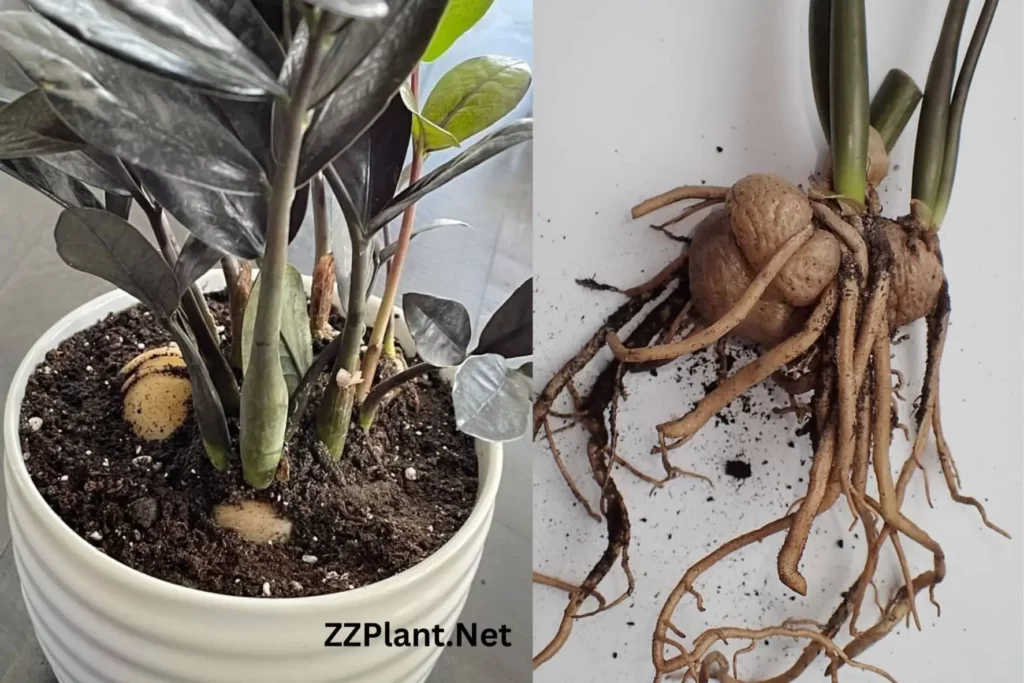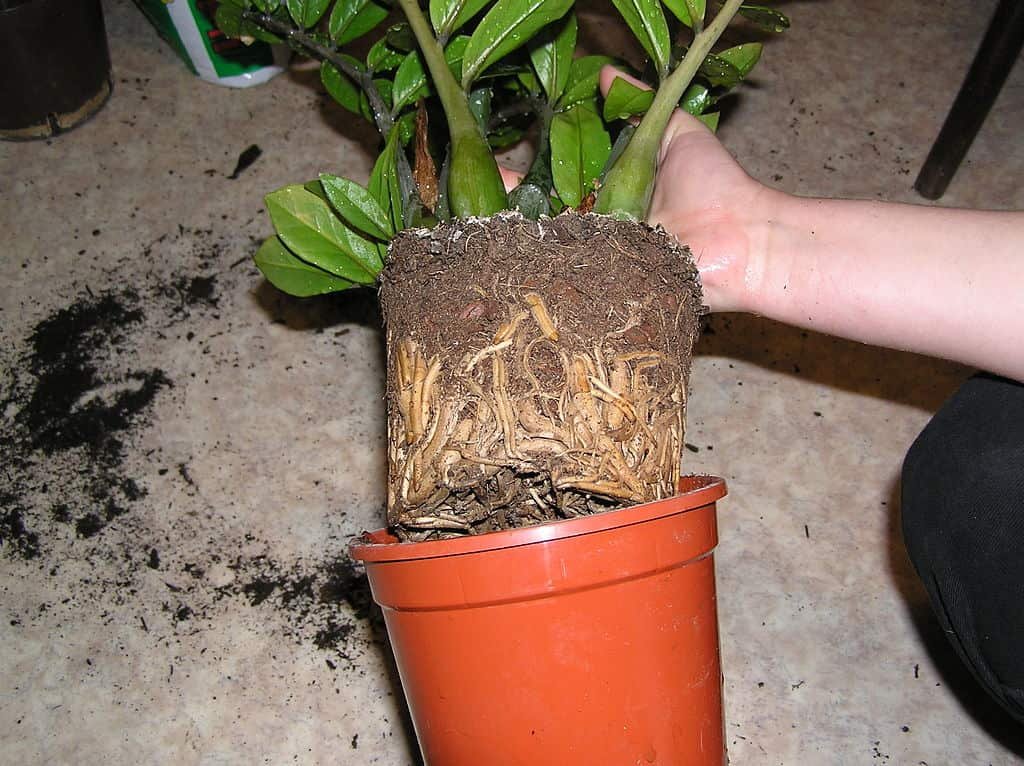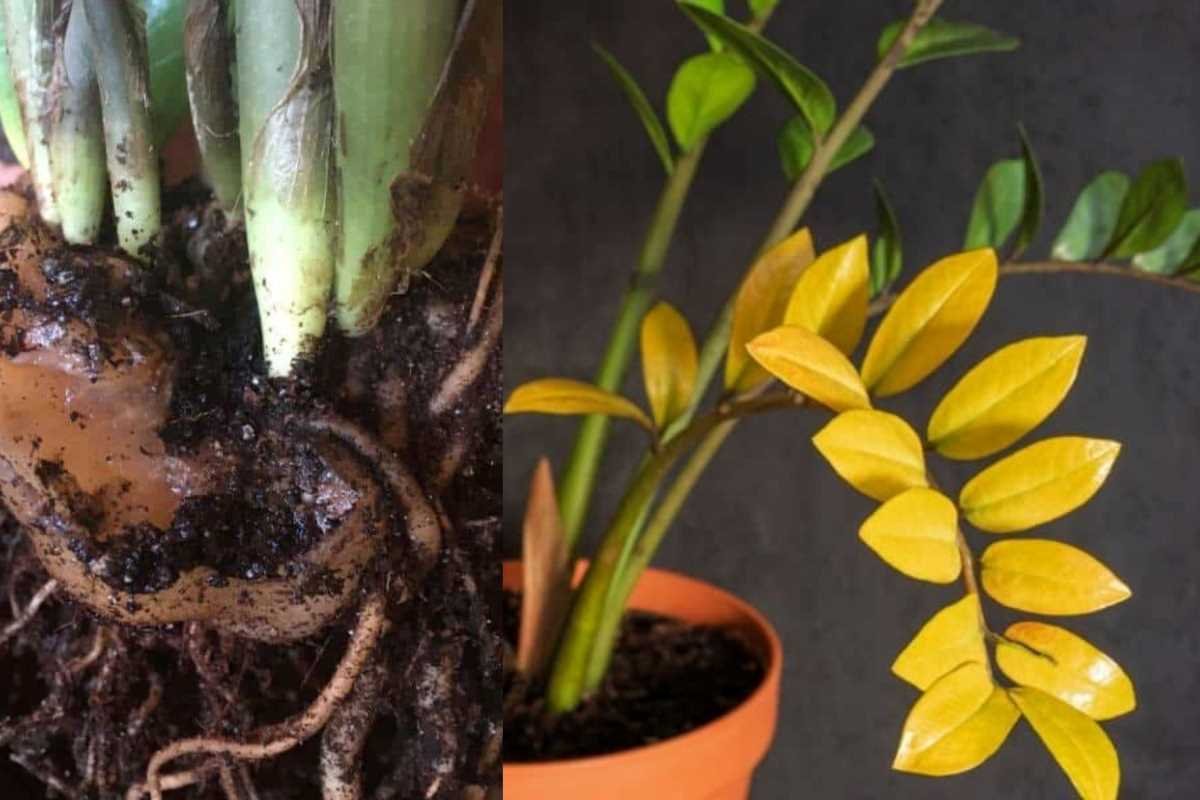ZZ plants, scientifically known as Zamioculcas zamiifolia, have gained popularity as indoor plants due to their attractive glossy leaves and ability to thrive in low-light conditions.
These resilient plants are known for their tolerance to neglect, but they are not entirely immune to certain issues, including root rot.
Root rot can significantly impact the health and vitality of ZZ plants, potentially leading to their demise if left untreated.
In this blog post, we will explore the causes, symptoms, prevention, and treatment options for ZZ plant root rot.
What is Root Rot?
Root rot is a common problem faced by many plant enthusiasts, including ZZ plant owners.
It occurs when the roots of a plant become damaged or infected, usually due to overwatering or poor drainage.
The excess moisture creates an ideal environment for pathogens, such as fungi and bacteria, to thrive, leading to root decay and eventual plant decline.
Causes of ZZ Plant Root Rot:
Overwatering:
One of the primary causes of root rot in ZZ plants is overwatering.
These plants have succulent-like roots that store water, making them susceptible to rot if the soil remains excessively wet for prolonged periods.
Overwatering prevents proper aeration of the roots and promotes the growth of harmful microorganisms.
Also, read about: ZZ Plant Yellow Leaves Not Overwatering: Reason & Guidelines.
Poor Drainage:
Inadequate drainage can also contribute to root rot.
When water cannot freely escape from the pot, it accumulates around the roots, suffocating them and increasing the likelihood of rot.
Using pots without drainage holes or using heavy soil that does not allow water to pass through are common culprits.
Contaminated Soil or Tools:
Using contaminated soil or tools when repotting or propagating ZZ plants can introduce pathogens to the root system.
It is crucial to use sterilized soil and clean tools to minimize the risk of infection.

Recognizing Symptoms of Root Rot in ZZ Plants:
Early detection of root rot is crucial for successful treatment. Here are some common symptoms to look out for:
- Yellowing or Wilting Leaves: Infected roots are unable to supply sufficient water and nutrients to the plant, causing the leaves to yellow, droop, or wilt. This symptom may initially affect the lower leaves, progressing upward as the rot worsens.
- Foul Odor: As root rot progresses, a foul smell may emanate from the soil. The odor is often a result of the decaying roots and the presence of harmful bacteria or fungi.
- Soft, Mushy Roots: Healthy roots are firm and white, while rotting roots appear brown, mushy, or black. Carefully inspect the root system by gently removing the plant from its pot and examining the roots for signs of decay.
Also read about, ZZ Plant Stem Rot: Causes, Symptoms, Prevention, & Treatment.
What does ZZ Plant Root Rot Look Like?
ZZ plant root rot can exhibit several visible signs and symptoms. Here’s what root rot may look like in ZZ plants:
- Discolored or Blackened Roots: Healthy ZZ plant roots are firm and white. However, when root rot occurs, the affected roots may turn soft, mushy, and appear brown, black, or even slimy. This discoloration is a clear indication of decaying roots.
- Foul Odor: As root rot progresses, a strong, unpleasant odor may emanate from the soil. The smell is often described as musty or moldy and is caused by the decomposition of the rotting roots and the presence of harmful bacteria or fungi.
- Stunted Growth: Root rot can impede the overall growth and development of the ZZ plant. You may notice that the plant is not growing as vigorously as before or that new shoots are not emerging. The lack of healthy roots to support growth can lead to stunted or slow growth.
- Easy Root Pulling: When examining the root system, you may find that the infected roots are weak and easily detach from the plant. Healthy roots typically have a firm attachment to the plant, while rotting roots may come off with minimal effort.
It’s important to note that these symptoms may also be indicative of other plant issues, so it’s crucial to carefully inspect the roots and look for signs of decay to confirm the presence of root rot.

Preventing ZZ Plant Root Rot:
Prevention is key when it comes to root rot. By implementing the following measures, you can significantly reduce the risk of your ZZ plant developing root rot:
- Proper Watering: ZZ plants prefer slightly dry conditions, so it is crucial to allow the soil to dry out between waterings. Water the plant only when the top inch of soil feels dry. Avoid excessive watering and ensure that water drains freely from the pot.
- Suitable Pot and Soil: Choose a well-draining pot with drainage holes to prevent water from pooling at the bottom. Opt for a lightweight, well-aerated potting mix specifically formulated for succulents or cacti. Adding perlite or coarse sand to the soil mix can improve drainage further.
- Adequate Light: ZZ plants thrive in low to moderate light conditions, but insufficient light can weaken the plant, making it more susceptible to root rot. Place your ZZ plant near a window with indirect light or use artificial grow lights if natural light is limited.
- Proper Hygiene: Maintain good hygiene practices when handling ZZ plants. Sterilize any tools or equipment used for repotting or propagating. Additionally, avoid cross-contamination by not reusing soil from previously infected plants.

How to Save ZZ Plant Root Rot
If you suspect root rot in your ZZ plant, prompt action is necessary to save the plant. Follow these steps to treat root rot effectively:
- Remove the Plant from the Pot: Gently remove the plant from its pot, being careful not to further damage the roots. Shake off excess soil and inspect the roots for signs of rot. Trim away any mushy or blackened roots using clean, sterilized pruning shears.
- Treat the Remaining Roots: Once the affected roots are removed, rinse the remaining healthy roots with clean water to remove any pathogens. You can also consider using a fungicide solution to disinfect the roots, following the manufacturer’s instructions carefully.
- Repot in Fresh Soil: Choose a clean pot with proper drainage holes and fill it with a fresh, well-draining soil mix. Place the plant in the new pot, ensuring that the roots are adequately spread out and covered with soil. Avoid overpacking the soil to promote better aeration.
- Adjust Watering Routine: After repotting, adjust your watering routine to prevent overwatering. Allow the soil to dry out slightly between waterings and monitor the plant’s response. Gradually increase watering frequency as the plant recovers.
Monitoring and Recovery:
After treating root rot, closely monitor your ZZ plant for signs of improvement.
It may take some time for the plant to recover, and new growth may emerge once the root system regains its health.
Continue to provide appropriate care, including adequate light, proper watering, and regular inspections to prevent further issues.
Related FAQs:
ZZ plant root rot is caused by a fungus that thrives in moist conditions. Overwatering is the most common cause of root rot, but it can also be caused by planting the plant in soil that is too dense or poorly draining.
The symptoms of ZZ plant root rot include wilting leaves, yellowing leaves, leaf drop, stunted growth, soft, mushy roots, and dark, brown roots.
If you find that your ZZ plant has root rot, the first step is to remove the plant from its pot. Gently rinse the roots off with water to remove any excess soil. Next, inspect the roots for any signs of rot. If any of the roots are soft, mushy, or dark brown, they should be cut away with a sharp knife or scissors. Once you have removed the dead or damaged roots, repot the plant in a new pot with fresh, well-draining potting mix. It is important to water your ZZ plant sparingly after repotting. Allow the soil to dry out completely between waterings.
The best way to prevent ZZ plant root rot is to avoid overwatering. Water your plant only when the top inch of soil is dry to the touch. You should also use a pot with drainage holes to allow excess water to escape. ZZ plants are also susceptible to root rot if they are planted in soil that is too dense or poorly draining. If you are not sure what type of soil to use, ask a nursery professional for advice.
If left untreated, ZZ plant root rot can kill a plant within a few days. However, if you catch the problem early and treat it promptly, you can often save your plant.
If you don’t have time to treat your ZZ plant for root rot right away, you can try to keep the plant alive by reducing the amount of water you give it. Allow the soil to dry out completely between waterings. You can also try to increase the humidity around the plant by placing it in a room with a humidifier or by misting the leaves with water.
Yes, ZZ plants can recover from root rot if the condition is detected early and appropriate treatment is administered. By removing the affected roots, treating the remaining healthy roots, and providing proper care, the plant can regrow healthy roots and resume normal growth.
ZZ plants prefer slightly dry conditions and are more tolerant of underwatering than overwatering. Water your ZZ plant only when the top inch of soil feels dry. It’s important to allow the soil to dry out between waterings to prevent excess moisture and the risk of root rot.
While self-watering pots can help regulate moisture levels and prevent overwatering, they are not foolproof against root rot. It is still important to monitor the soil moisture and ensure that the pot has proper drainage to allow excess water to escape. Additionally, the soil and watering frequency should still be adjusted to maintain a slightly dry environment for the ZZ plant’s roots.
While prompt action, such as removing the affected roots and repotting in fresh soil, is the most effective treatment for root rot, some natural remedies can assist in the recovery process. For example, using a diluted hydrogen peroxide solution to rinse the healthy roots can help disinfect them. Additionally, applying beneficial microbial inoculants to the soil can help restore the balance of beneficial microorganisms and suppress harmful pathogens.
It is generally not recommended to propagate ZZ plants from cuttings if the parent plant has root rot. The risk of transferring the infection to the new cuttings is high. It is best to address the root rot issue in the parent plant first and ensure its recovery before considering propagation.
Conclusion
ZZ plants are resilient and relatively low-maintenance, but they are not impervious to root rot.
By understanding the causes, recognizing the symptoms, implementing preventative measures, and taking prompt action when root rot occurs, you can safeguard the health and longevity of your ZZ plant.
Remember to maintain proper watering practices, provide suitable growing conditions, and prioritize good hygiene to minimize the risk of root rot and enjoy a thriving ZZ plant in your indoor space.

